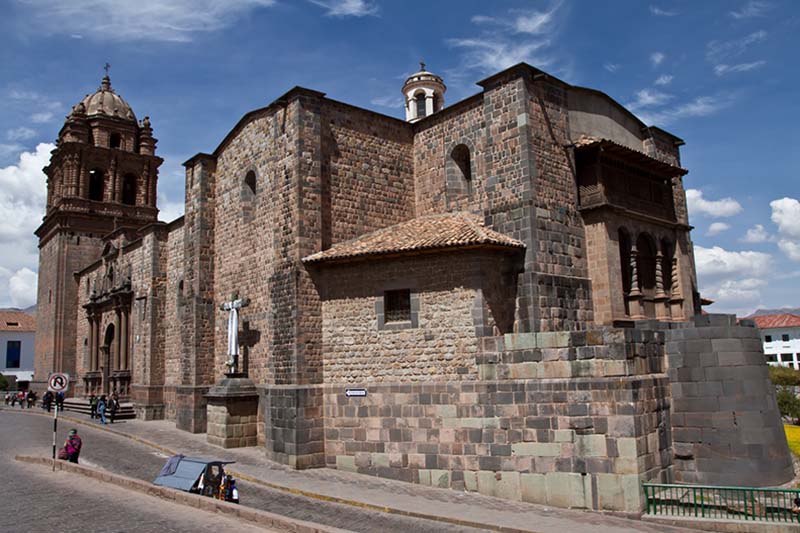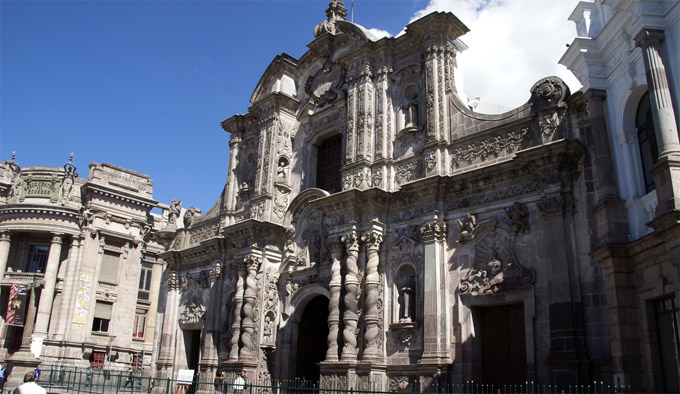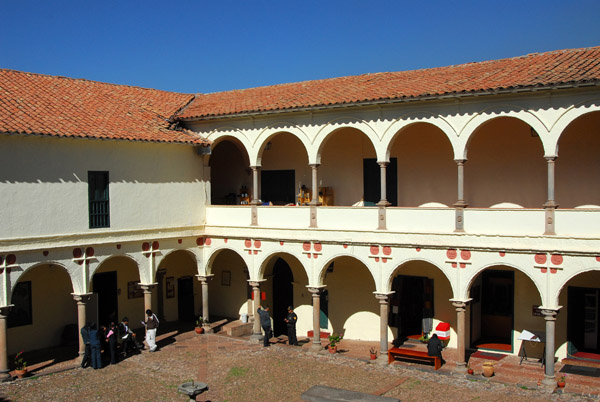
Places to visit in Cusco
Santo Domingo and Coricancha

The congregation of Santo Domingo is based on the vestiges of the renowned Inca site of Coricancha, the Templo del Sol or Temple of the Sun. Coricancha (Q'orikancha in Quechua) signifies "brilliant yard," and its dividers were once lined in sheets of strong gold. Statues and trimmings of gold beautified the inside, and a substantial, brilliant circle mirrored the sun, illuminating the sanctuary. This was stripped by the conquistadors not long after they touched base in Cusco, and the greater part of the gold was softened down. All that remaining parts today of the once heavenly Coricancha is the fine Inca stonework, which frames the establishment of the congregation of Santo Domingo. From both inside and outside, you can see the great six-meter-high bent divider toward one side of the congregation.
Inca Walls

Strolling next to the old Inca Walls that line the tight roads of Cusco resembles strolling through an open-air exhibition hall. These unpredictably built Inca dividers are the establishments of the present Cusco, and even though they are discovered everywhere throughout the city, a couple of zones emerge. The absolute best places to see them are along the roads of Loreto and Hatunrumiyoc. Inca dividers line the two sides of Loreto, which runs southeast from the Plaza de Armas. The south divider is from Amarucancha, the site of the Palace of Huayna Capac, and on the north side is the mass of the Acllahuasi, one of the most established dividers in Cusco. Hatunrumiyoc runs upper east from the Plaza de Armas and is famous for the 12-sided stone found along the east divider. It's generally simple to spot since keepsake dealers set up normally straightforwardly opposite the stone. The bent end of the Santo Domingo church is another exceptional case of Inca stonework.
Sacsayhuaman

The monstrous invigorated complex of Sacsayhuaman is a huge ruin in Cusco and is close enough to the memorable focus that you can stroll there. Numerous sightseers stop to see it while in transit to Pisac. Sacsayhuaman is thought to have both military and religious centrality. Cusco was structured in the state of a jaguar, with Sacsayhuaman as the head. Three bulwarks of crisscrossing resistance dividers stretch out for just about 300 meters, framing the teeth of the panther. The interest of this ruin isn't only its amazing size, yet the span of the stones from which it was manufactured, and the unpredictability of the stonework. Think about that what you see here is just about 20% of the first mass - until it was secured during the 1930s, hinders from Sacsayhuaman were being pulled away to use for development in Cusco. A large portion of the biggest stones, which were increasingly hard to move, were left at the site, and structure the essential structure. A portion of these stones measure in excess of eight meters high and weigh 361 tons. Regardless of the monstrous size of these stones and their regularly unpredictable shapes, they have fitted together so impeccably that advanced specialists wonder at how the Incas oversaw such an accomplishment.
La Compania

Compania de Jesus, more often than not called La Compania, is a Jesuit church worked in the sixteenth century. It was severely harmed by the 1650 tremor yet was reconstructed and completed in the late 1660s. La Compania was the wellspring of extensive contention when it was fabricated, on the grounds that its magnificence took steps to outperform that of the house of prayer in a similar square. The religious administrator of Cusco whined about the congregation's sumptuous plan and the contention was at long last conveyed to Pope Paul III to mediate. The Pope agreed with the diocesan, yet when the expression of his choice achieved Cusco, the Jesuits had nearly finished La Compania. So the Pope's choice had little impact, and La Compania's amazingly fancy Baroque façade still opponents the house of prayer. It is especially delightful when lit up around evening time. However, even the lavish façade doesn't set you up for the great gold altarpiece studded with polychrome statues. La Compania is based on the establishments of the castle of Huayna Capac, the last leader of the unified Inca Empire, whose standard reached out over a lot of present-day Peru, Bolivia, Ecuador, Argentina, Chile, and southwestern Colombia.
Plaza de Armas
The Plaza de Armas has been the core of Cusco from the season of the Inca Empire when the square was called Huacaypata or Aucaypata. The basilica, on the upper east side of the Plaza de Armas, is the principle fascination, and you'll frequently discover the two local people and voyagers unwinding on its means. On one side of the house of God is the congregation of Jesus Maria and on the other is El Triunfo. The southeastern side of the principal square is ruled by the congregation of La Compania, which is effectively confused with the house of prayer in light of its lavish façade. Be that as it may, it is little and does not have the stupendous stairs in front. The other opposite sides of the Plaza de Armas are fixed with pilgrim arcades. The focal point of the square is a spot to lay on the seats and appreciate the greenhouses and wellspring in the inside as you observe everyday life in Cusco. The court is particularly exuberant and excellent around evening time, with individuals walking around and the structures lit with spotlights.
Cathedral

Development on Cusco's church building started in 1559 and was finished in 1669. It is based on the site where the Inca Wiracocha's castle once stood. The three-aisled nave of the Renaissance-style church is bolstered by 14 monstrous columns, surprisingly few for such a huge nave. The principal special stepped area, made of silver, weighs 400 kilograms, and the choir slows down are unpredictably cut from cedar. Much progressively noteworthy is the church's gathering of in excess of 400 depictions from the Escuela Cuzqueña, the Cusco School. These artistic creations from the sixteenth and seventeenth century are extraordinary in that they reflect European style, however with a conspicuous local Andean impact. You can see a genuine case of this in The Last Supper by Marcos Zapata, which demonstrates the witnesses eating on a guinea pig. The work of art of the torturous killing in the sacristy is ascribed to Van Dyke.
Museo Inka

The best historical center in Cusco for those intrigued by the Incas, Museo Inka is housed in the lavish sixteenth-century Spanish Admiral's House, a structure worth the visit in its own right. The house, which had a place with Admiral Francisco Aldrete Maldonado, was based on Inca establishments. It was harmed seriously in both the 1650 and 1950 quakes yet has been fixed and is a standout amongst the most noteworthy pioneer houses in Cusco. The accumulations center around the Incas, from the ascent of their way of life to the Conquest and its effect on Peruvian societies. Shown are pottery, materials, metal and gold work, adornments, mummies, and skulls that demonstrate an early careful technique for trepanning. Particularly intriguing is the 450 cut and painted wood glasses are known as queros, the biggest gathering on the planet. Amid the busiest vacationer season, neighborhood weavers from the Centro de Textiles Tradicionales de Cusco show and sell their amazing work in the yard.
Museo Casa Concha

A century after classicist Hiram Bingham conveyed Machu Picchu to world consideration, the antiques he found there were repatriated from the Yale University historical centers where he had saved them. Come back to Peru in 2011, following a time of frequently combative dealings; they are currently shown in the previous home of Jose de Santiago Concha, a noble from the beginning of the triumph. Twelve rooms of the excellent balconied house, which spreads around three patios, house the accumulation of in excess of 360 curios that incorporate things from substantial earthenware pots to little silver pins.
Thank you, we have received your enquiry!
We have received your message and would like to thank you for writing to us. If your enquiry is urgent, please use the telephone number listed on this page, to talk to one of our staff members. Otherwise, we will reply by email shortly.
